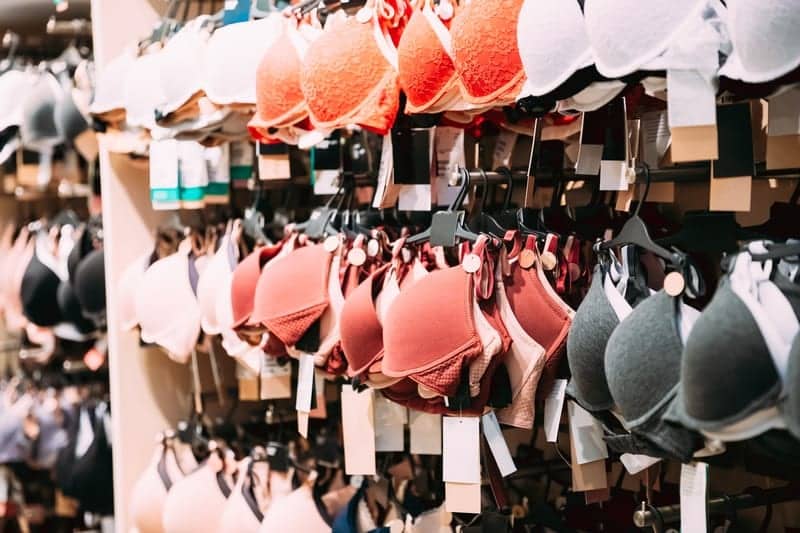No two breasts are alike. For many women, even her own two natural breasts may not quite match. It is normal to have breasts that are different sizes and even different shapes. Breasts come in many different shapes, all of them completely normal, but important to be aware of when shopping for a bra.
“A properly fitted bra is important for all women, not just large-breasted women who suffer discomfort in their necks and backs when their bras don’t support them adequately. Every woman will be more comfortable and less restrained in her physical activity if she is wearing a properly fitted bra.”
— plastic surgeon and breast specialist Dr. Constance M. Chen
Breast Shape Determinations
Breast shape is determined primarily by genetics, but influenced by several additional factors, weight chief among them. The breast tissue that isn’t made up of milk ducts is largely composed of fat cells that increase and decrease as weight is gained and lost, potentially changing the shape as well as the size of the breast. Other factors are the hormonal changes that accompany pregnancy and breastfeeding and the changes that are a natural consequence of aging as skin loses elasticity and as the composition of breast tissue changes to a higher concentration of fat, which is more prone to sagging. Most women find that the shape of their breasts changes more than once over the course of their lifetimes and with that change comes the realization that it may be time to retire the bra style worn for decades and get fitted for a new one.
“Any catalog of breast shapes is only an approximation. Just as every woman is unique, her breast shape cannot be expected to conform to a picture or description. However, even having a general idea of the one or two shapes that match you best can make all the difference in making sure you get a bra that fits. These descriptions of breast shapes aren’t comprehensive but most women – with the aid of a mirror – should be able to get an idea of which ones come closest to her own.”
— Dr Chen
- Round breasts appear to be equally full at the top and bottom of the breast. Not many women have well-rounded breasts, but many bras are designed for this presumed shape and account for lots of poor fit.
- Tear drop breasts are also rounded but fuller at the bottom than at the top. Women who have lost weight may find that their breasts now reflect this shape as they have less roundness at the top.
- Bell breasts are also fuller at the bottom, but narrower at the top and less rounded than tear drops.
- East west breasts have nipples that point outward, away from each other.
- Side set breasts have a wide space between them; close set breasts have very little space between them.
- Slender breasts are narrow and long and have nipples that point downward.
- Athletic breasts tend to be wide-set and more muscular with less breast tissue, correlating with an athletic body that is muscular with little fat.
- Conical breasts are cone-shaped rather than round and are more common in small-breasted women.
- Asymmetric breasts may have differences in size or shape.
- Relaxed breasts have looser tissue and nipples that point downward, similar to slenders, but generally fuller; they are more common later in life.
“Many women wear a bra that does not fit properly, which can lead to discomfort. The best way to be properly fitted for a bra is in a specialized shop with experienced bra fitters. But with or without expert help, understanding the shape of your breasts will help you get the right fit. When a bra fits properly, there will be no gapping and no overflow in the cups, the straps won’t slip or dig into your shoulders, and you should be able to slip two fingers under the band in the back. Remember that the shape of your breasts will affect which bra is right for you.”
— Dr Chen
Constance M. Chen, MD, is a board-certified plastic surgeon with special expertise in the use of innovative natural techniques to optimize medical and cosmetic outcomes for women undergoing breast reconstruction. She is Clinical Assistant Professor of Surgery (Plastic Surgery) at Weill Cornell Medical College and Clinical Assistant Professor of Surgery (Plastic Surgery) at Tulane University School of Medicine.
[Source(s): MCPR LLC, PRWeb]
Related Content:
The COVID-19 Vaccine and Breast Implants: Do They Affect One Another?
8 Things a Plastic Surgeon Wants You to Know About Breast Revisions
This Plastic Surgeon Developed a Reconstructive Technique For Breast Cancer Survivors Who Don’t Want Implants





